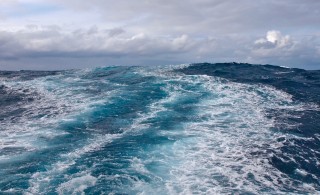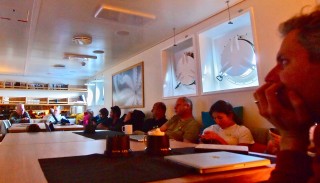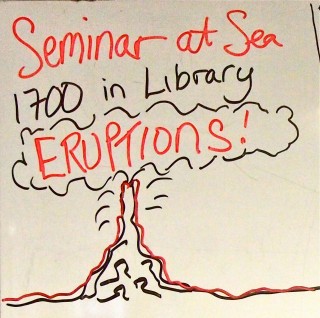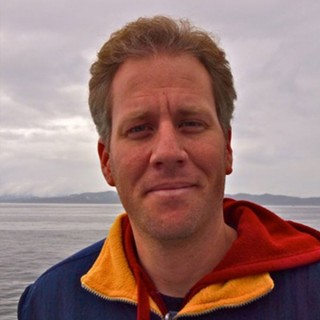Typically on a research cruise as the weather permits, the sub goes down, the samples come up, they get processed, and the samplers get turned around.

Then the whole process is repeated: down, up, process, prepare, all times 10 or more. If you’re lucky, you sleep a little. It can be exhilarating, but it’s also exhausting. There’s barely enough time to maintain good hygiene, much less stop and reflect.
So, I have a confession. I have on occasion hoped for a weather delay to get a break from what can be a debilitating pace of cruise life. After perfect weather and non-stop diving on my last cruise, I suppose I may have been a bit overzealous in my entreaties to the weather gods. Therefore, in an attempt to redeem my karma, I hope to highlight the silver lining in what has turned out to be the mother of all clouds.
It’s been like watching a series of TED talks, only it’s in my living room…
World-class Science at 50 Knots

Although the storm has been severe, the Falkor crew has been utterly unperturbed. In fact, the captain informed us he has been on only one other ship that has ridden so well in such turbulent waters. Admittedly, this was probably cold comfort to the more seasick among us, but comfort nonetheless.
With our minds at ease and our hands idle, we needed something to focus on. To keep us engaged, chief scientist Julie Huber arranged almost daily “Sea Seminars” showcasing different areas of science and presented by experts in the field. As luck would have it, they all happen to be out in the same confined space with nowhere to go and time to spare. The seminars take place the hour before dinner, and a rotating cast derived from both the science team and the Falkor crew attends. The initial talks then frequently evolve into smaller discussions between seminar participants.
After one such seminar—on extreme life—the discussion eventually made its way, in great detail, to lateral gene transfer. I didn’t quite follow the whole conversation, but I could tell those who did were excited. As several of us looked on dazed, Dr. Huber explained, somewhat apologetically, that it’s a rare event for the entire team to gather in one place to discuss cutting edge science with no distractions.
That’s when it occurred to me how exceptional this opportunity has been. It’s been like watching a series of TED talks, only it’s in my living room, and a whole catalog of TED speakers are on hand to more thoroughly explore each topic.
The presentations have run the gamut from new-aged observatory technology, to extreme life, to underwater volcanic eruptions. I even had the opportunity to hear about the life, death, and discovery of the Terra Nova, a sailing vessel built in 1884. This last one was given by Falkorcrewmember Leighton Rolley. He used his free time to study available literature in search of clues to the whereabouts of the lost ship, which he and the Falkor crew then found within a 24 hour period during early tests of the ship’s sonar system. Then they used a metal sled outfitted with GoPro cameras to gather footage of the wreck. Leighton will be giving a talk about this fascinating work on October 9th at the Royal BC Museum when we return to Victoria in a couple of days.
The Science Continues

These are all presentations I might have heard in some piecemeal fashion over the years, but to encounter them in such rapid succession, in such an informal setting, is tremendously helpful in drawing connections between seemingly disparate fields of science. So, while the weather may have thrown a wrench in our field operations, the scientific process is alive and well. In the words of the infamous Doctor Emmett Brown in Back to the Future, “You can’t keep a good scientist down.”

